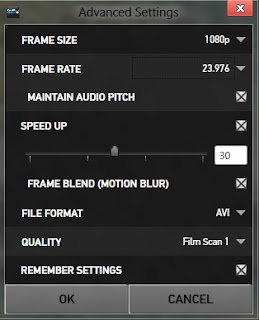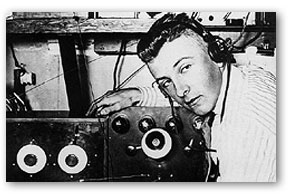Since I got my hands on the HERO3 Black Edition, I’ve been doing significantly more time-lapse. This is not because the stills are so much better than HERO2, and they are, it is due to the new video modes at 2.7K and 4K, combined with Protune. There is no need to time-lapse with JPEG sequences with this camera, unless you know you need a very long interval. Most time-lapse shoots that document human experiences, are better with shorter intervals between 0.5 and 10 seconds. Knowing what interval is best takes practice, but forget that! With the new camera shooting 4K at 12 or 15fps, basically a continuous 9MPixel motor drive sequence (stored in an MP), time-lapse guess work can be left to post. Resampling 4K video to your needed interval is a straightforward process in most video tools, and a standard feature in the free GoPro CineForm Studio software.
At 4K you get most of the spatial resolution of the still mode, at 6+ times the temporal resolution (12/15fps vs a maximum of 2fps for JPEG) at approximately half the data rate. So there is a data rate saving using the video modes for simulating the shorter intervals, but for long intervals there are still reasons to shoot ultra-HD video over stills — simulated longer shutter intervals. The HERO cameras mainly use the shutter speed to control exposure, which is fine for high action moments, but for scenes best for time-lapse a fast shutter may not be desirable. With a DSLR, you can stop down the camera’s aperture, but that only gets you so far. For time-lapse exposures of 5 seconds of more, that would require a lot of neutral density filters for daylight shooting. For a HERO camera, aperture control is not available, and adding neutral density is highly impractical, so we need do the camera operation in post.
So let’s say you want to simulate a 5 second exposure with a 10 second interval in full daylight (simulating a 180 degree shutter at play speed.) HERO’s default exposure might be around 1/1000th of a second in strong daylight, nowhere near the 5 second exposure target. Yet the camera could be recording 4K at 12fps over those 5 seconds, collecting 60 individual frames. If you average those 60 frames, you get very close to the look of a single long exposure from a DSLR with a hell of a lot of ND filtration, without the setup headache. Typically blending over 30 frames for daylight simulates the motion blur of a single exposure. With darker shots that might have the camera’s shutter exposure near 360 degrees (1/30th for 30 fps video), far fewer frames can be blended for a natural look. Of course, the more frames used in averaging, the smoother the results. I have been asked how a GoPro achieved this high action shot with so much motion blur:
Now you know. This was shot 1920×1440 at 24p, with 30 frames averaged for each single frame in the time-lapse output.
Continuing with the target of 5 second exposure and with 10 second interval, I was intending to model 180 degree shutter, however the CineForm Studio software with the Motion Blur enabled will simulate 360 degree (this was by design.) So setting “SPEED UP” to 60, “FRAME BLEND (MOTION BLUR)” on and the output frame rate to 23.976p, the result will be a clip with 5 second exposure and a 5 second interval.
To get this to simulate a 10 second interval simply place it in your editing tool’s timeline and double the playback speed (with frame blending off.) Now every other 5 second exposure will be displayed for 180 degree shutter emulation.
Protune helps greatly, particularly in low light. Now that we are averaging frames together, we get an excellent side effect: a large reduction in noise. Each doubling of the number of frames averaged will half the noise in the image. Combined with Protune, which preserves much more shadow detail, you can basically see new details that would normally be lost to noise with regular video or stills time-lapse. Protune lifts the shadow detail so that it is no longer crushed to black. In standard mode, averaging crushed black only results in more crush black, yet in Protune averaging a noisy shadow detail results in more shadow detail.
I’ve used this technique in most of my recent videos, such as this one (the night time-lapses are very clean, because of HERO3 Black and this averaging technique using CineForm Studio):
24 Hours of Lemons at Chuckwalla Dec 2012. from David Newman on Vimeo.
Update Jan 5/2013: Example comparing classic and video blended time-lapse
P.S. For those who have been following my Instagram feed (http://instagram.com/0dan0) or via Twitter (@David_Newman), you are likely aware that I’ve been combining the above time-lapse technique with a motion controller I have been experimenting with. This combined a GoPro with a 3D printed motion controller that runs on toy G-scale train track. I’ve just posted its design on thingiverse.com, for this project. Let me know if you successfully build one, and link me to your videos.




